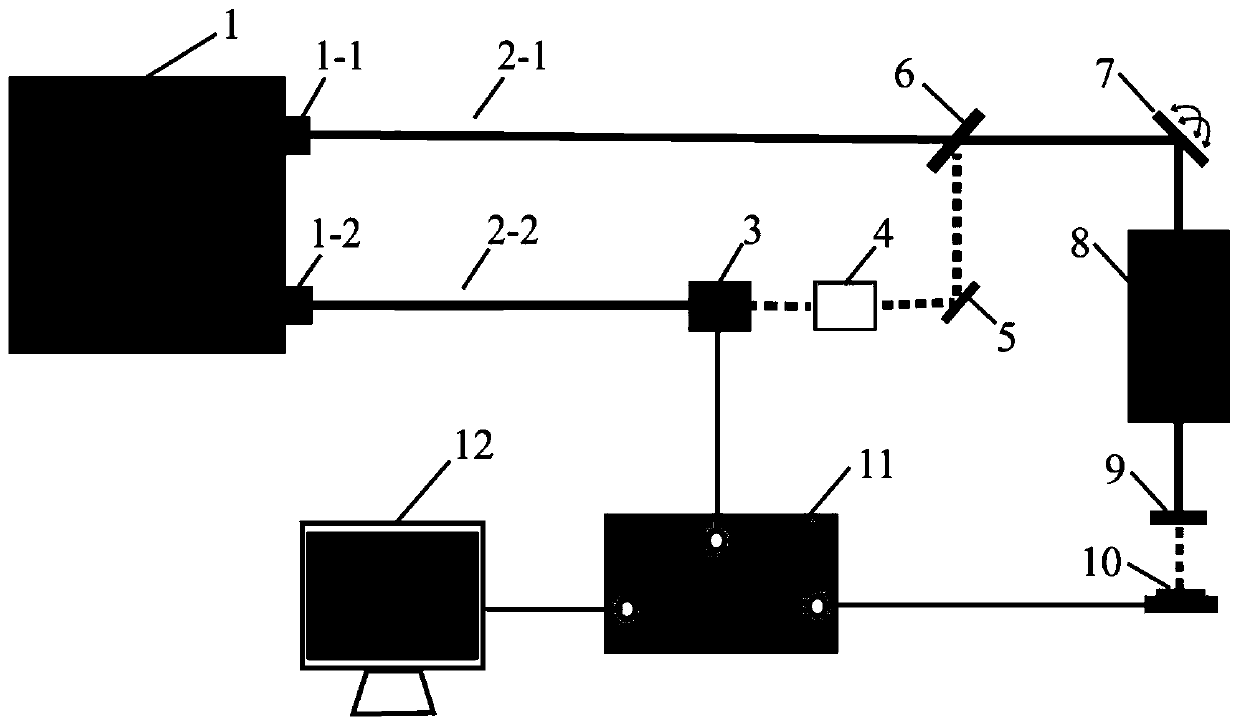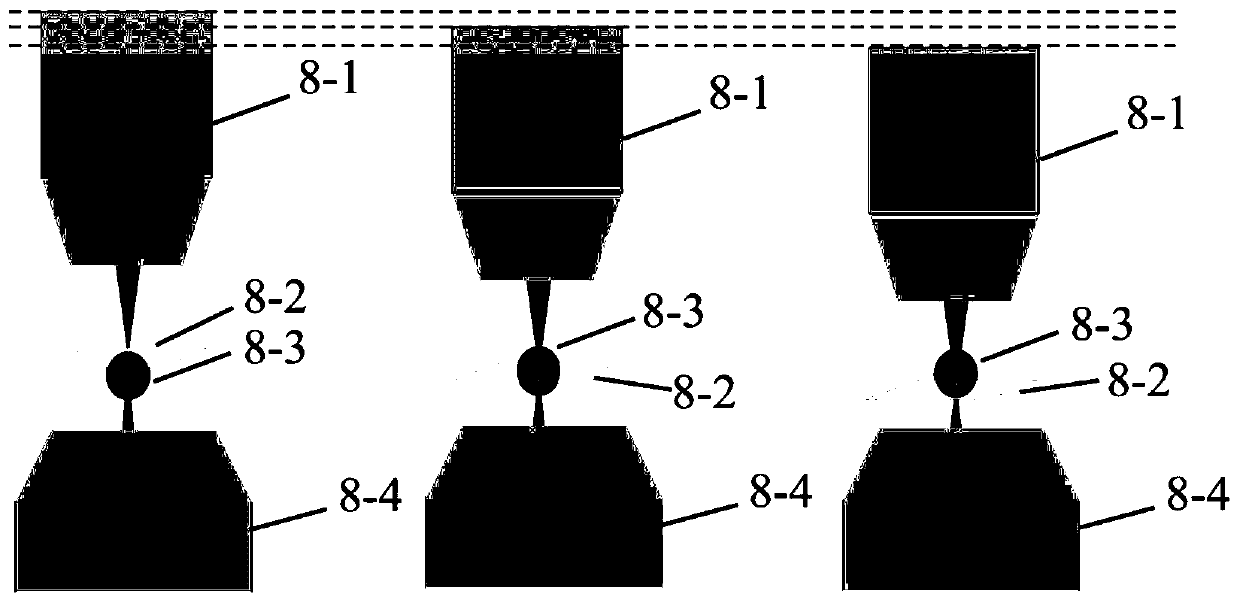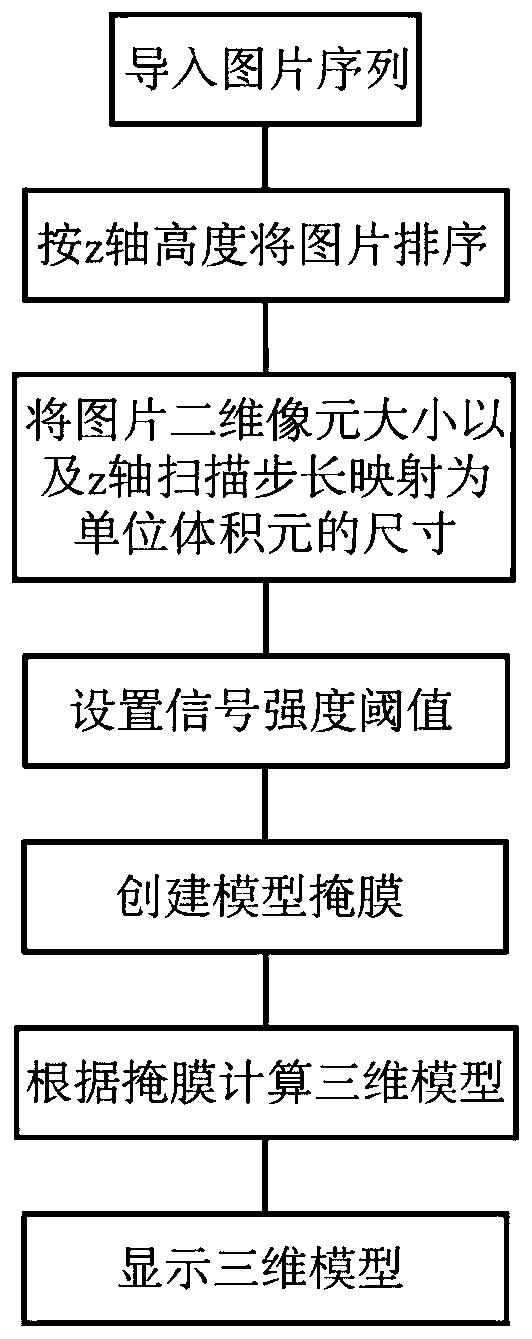Atmospheric single particle quick three-dimensional chemical imaging method based on stimulated Raman scattering
A technology of stimulated Raman scattering and atmospheric particles, applied in Raman scattering, individual particle analysis, radiation pyrometry, etc., can solve problems such as difficult experimental operation, inability to quickly detect particle morphology, and complicated sample pretreatment
- Summary
- Abstract
- Description
- Claims
- Application Information
AI Technical Summary
Problems solved by technology
Method used
Image
Examples
Embodiment 1
[0034] The invention provides a method for rapid three-dimensional chemical imaging of atmospheric single particles based on stimulated Raman scattering. In two examples, self-constructed such as figure 1 Stimulated Raman scattering microscopy system shown. The femtosecond laser 1 has two output ports, one end 1-1 outputs a tunable wavelength of 680nm-1300nm as pump light, and the other end 1-2 outputs a fixed wavelength of 1040nm as Stokes light. The pump light and the Stokes light pass through the first SF57 dispersion glass 2-1 and the second SF57 dispersion glass 2-2 respectively to complete the linear chirp process, so that the femtosecond light is stretched into picosecond light, which is stimulated Raman Provide half height and full width of 15cm -1 spectral resolution. Next, the Stokes light is 0, 1 modulated by the electro-optic modulator 3, and the relative time delay between the pump light and the Stokes light is adjusted by the precision displacement stage 4, an...
Embodiment 2
[0038] A large number of experiments have shown that: compared with nitrate and sulfate, the composition of secondary organic aerosols in atmospheric particulate matter is messy and its proportion is low. Therefore, in this embodiment, only sodium nitrate and sodium sulfate are selected as the substances to be detected. In conjunction with Example 1, the fast three-dimensional chemical imaging method of sodium nitrate and sodium sulfate in atmospheric particulate matter comprises the following steps altogether:
[0039] S1. The experimental parameters of the respective Raman peaks in the stimulated Raman scattering microscope system are obtained from the standard substances of sodium nitrate and sodium sulfate. The parameters include: the fixed Stokes wavelength is 1040nm, and the optimally selected pump The wavelength is 942nm, and the corresponding relative time delays are 0ps and 1.33ps;
[0040] S2. First set up the two outputs of the laser, then set the relative time del...
PUM
 Login to View More
Login to View More Abstract
Description
Claims
Application Information
 Login to View More
Login to View More - R&D
- Intellectual Property
- Life Sciences
- Materials
- Tech Scout
- Unparalleled Data Quality
- Higher Quality Content
- 60% Fewer Hallucinations
Browse by: Latest US Patents, China's latest patents, Technical Efficacy Thesaurus, Application Domain, Technology Topic, Popular Technical Reports.
© 2025 PatSnap. All rights reserved.Legal|Privacy policy|Modern Slavery Act Transparency Statement|Sitemap|About US| Contact US: help@patsnap.com



